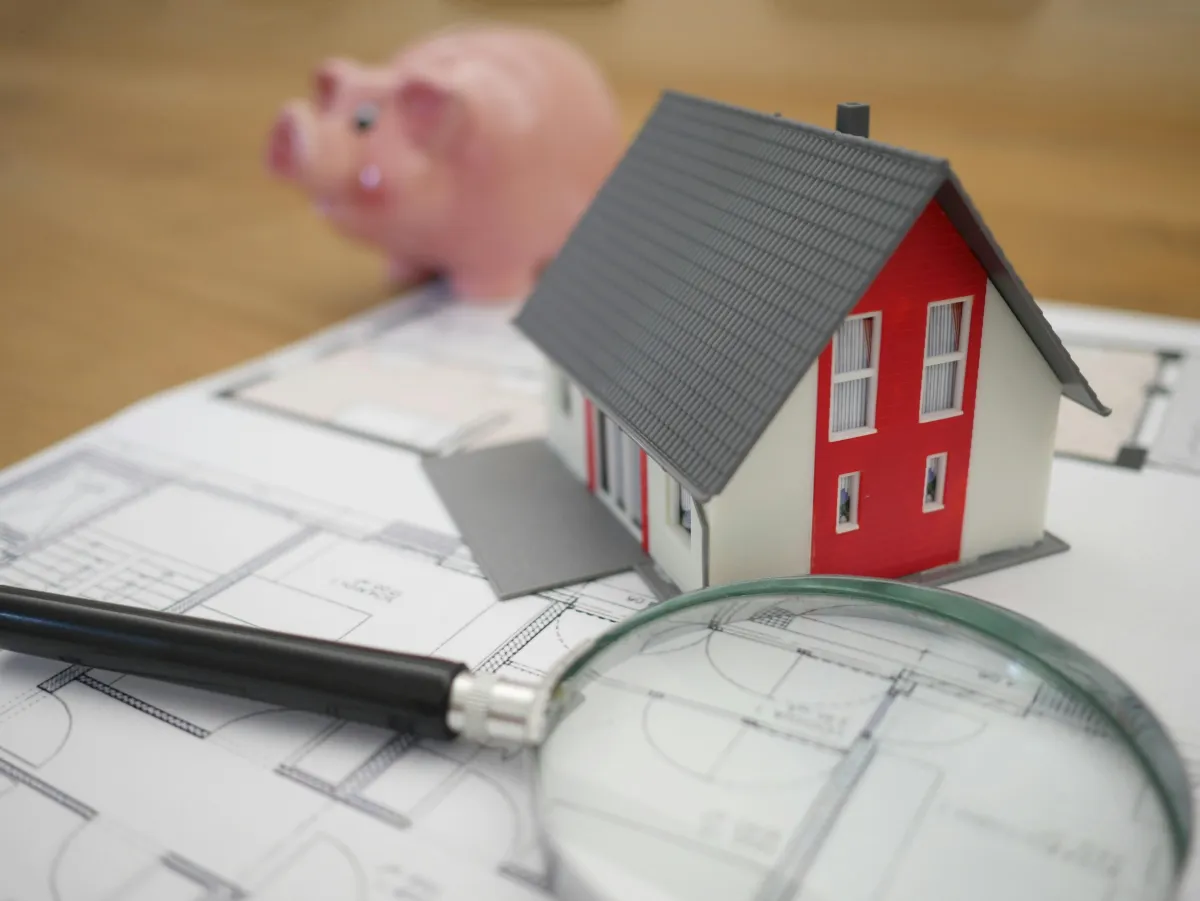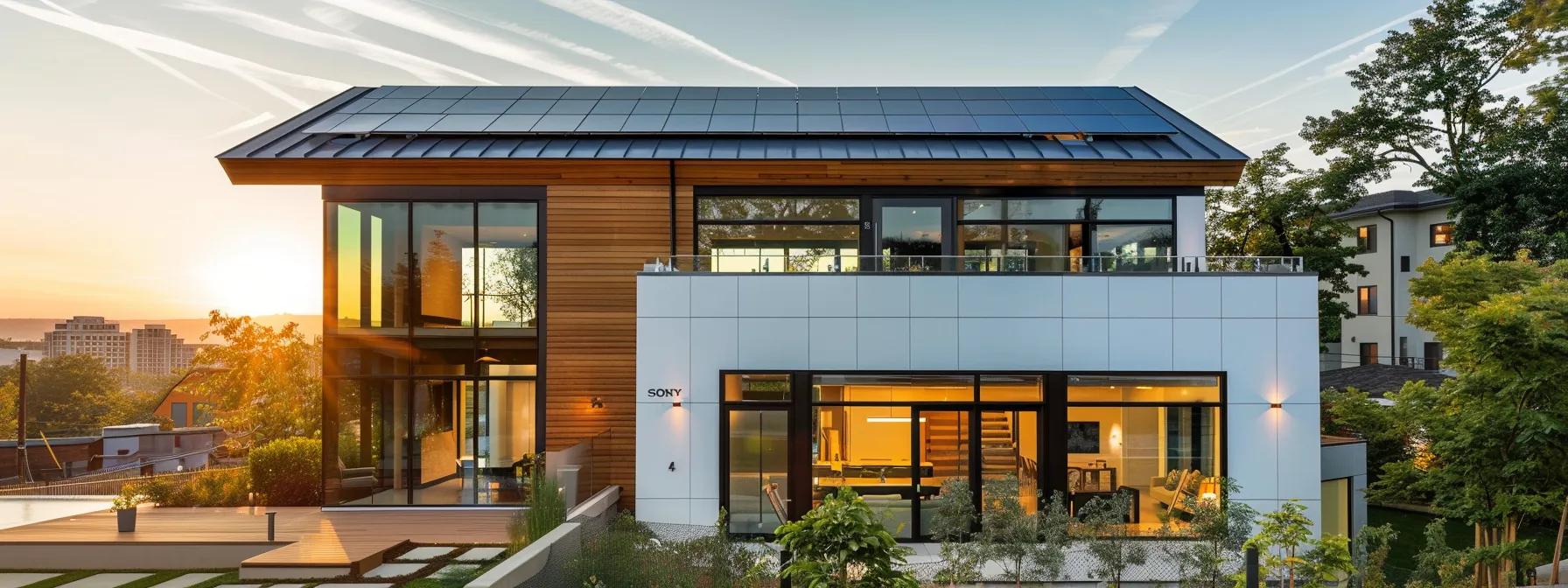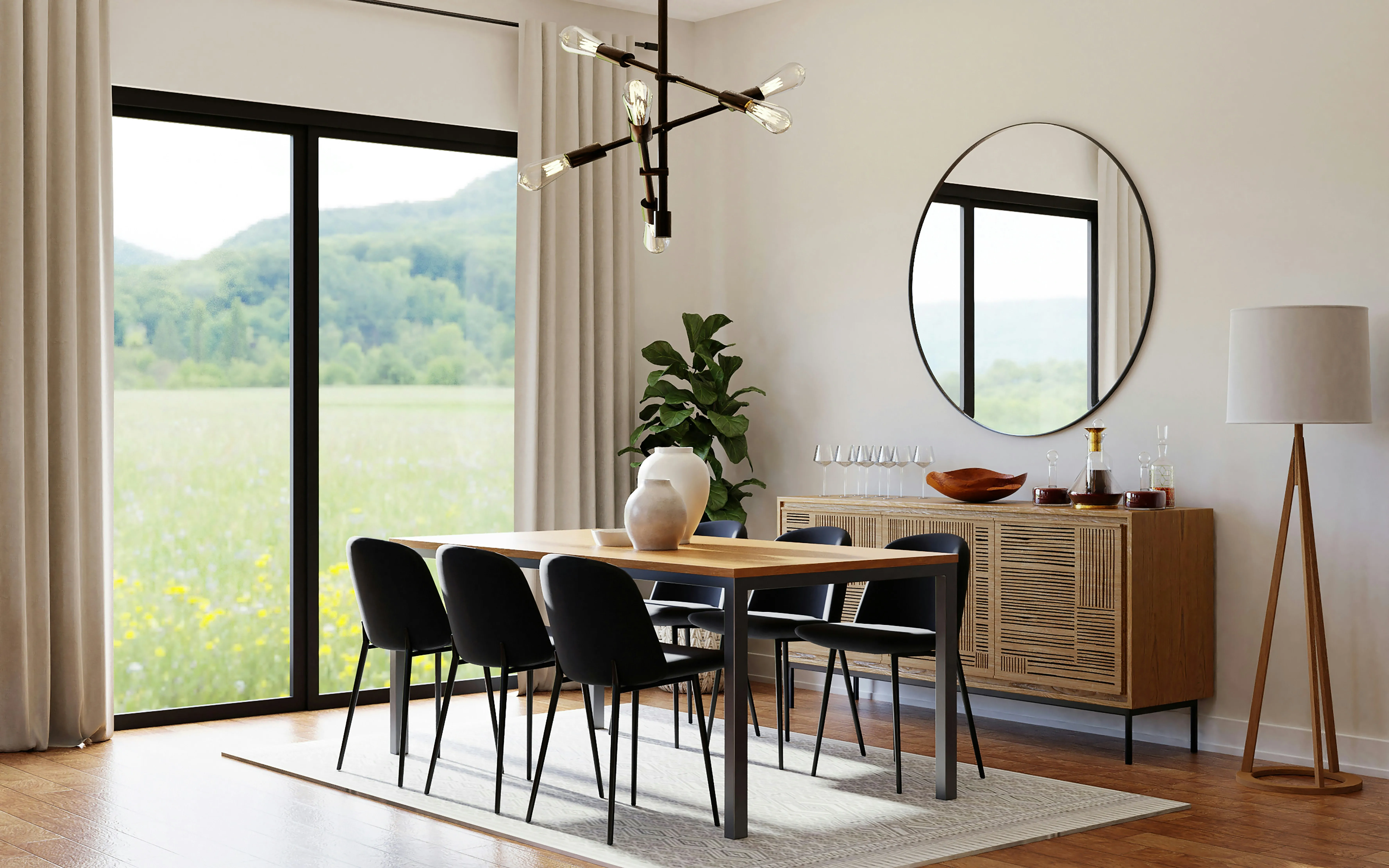
Design Smarter: Build a Custom Sustainable Home That Lasts
Designing a sustainable custom home goes beyond picking eco-friendly materials—it’s about aligning every design decision with performance, comfort, and long-term efficiency. From strategic floor planning to passive systems and locally sourced resources, every detail matters. A well-thought-out custom house plan reflects not only environmental responsibility but also lifestyle goals. It maximizes natural elements, conserves energy, and reduces future renovation needs. Homeowners aiming to build smart from the ground up need a tailored approach that fits their site and habits. Custom Builder Connection (CBC) helps them connect with experienced custom builders who prioritize energy-conscious planning.
Key Takeaways
Custom sustainable house plans focus on energy efficiency, low environmental impact, and long-term savings.
Strategic layouts enhance airflow and natural light, cutting energy use and boosting comfort.
Using local, low-emission, and durable materials supports healthier, more efficient homes.
Renewable-ready designs future-proof homes and often qualify for incentives.
CBC connects homeowners with custom home builders who specialize in sustainable, site-responsive design.
What Are Custom Sustainable House Plans and Why Are They Important?

Custom sustainable house plans combine eco-conscious building strategies with personalized layouts tailored to a homeowner’s lifestyle and location. These plans focus on improving energy efficiency, reducing environmental impact, and maximizing long-term savings. Unlike generic blueprints, custom plans address climate conditions, land slope, and sun orientation to boost performance. Through smart space planning, insulation, and renewable-ready designs, they support comfort while promoting sustainability. CBC helps homeowners begin this journey by connecting them with custom builders who specialize in energy-efficient planning.
How Do Personalized Layouts Enhance Energy Performance?
Custom floor plans allow for intentional room placement that maximizes natural light and airflow. Living areas can be oriented to the south for passive solar gain, while service areas like bathrooms are placed on less-exposed sides. These adjustments reduce reliance on HVAC systems and improve energy efficiency. Builders connected through CBC help design layouts based on the unique conditions of each lot. With expert guidance, homeowners can ensure their space is functional, efficient, and responsive to their family’s habits and goals.
What Design Features Support Eco-Conscious Living?
Features like deep roof overhangs, energy-efficient window placement, and cross-ventilation corridors are critical to a green home. These design elements minimize energy loss, enhance indoor comfort, and reduce utility costs. Smart zoning within the floor plan also ensures areas are only heated or cooled when needed. We can connect homeowners with experts who know how to implement these strategies for lasting performance. Whether it's daylight optimization or envelope efficiency, every detail contributes to a healthier, more resource-efficient home.
Why Is Site-Specific Design Essential for Sustainability?
Adapting a home’s design to its local environment ensures it performs well across seasons. For instance, plans that account for slope can improve drainage and limit excavation, while wind patterns can shape window placement for airflow. By using regional climate data, designers can suggest materials and layouts that boost insulation and moisture control. Sustainable living becomes both practical and personal when site-specific strategies are implemented early in the design phase.
Which Sustainable Materials Are Best for Custom House Plans?

Selecting sustainable materials is essential when designing a custom home that balances environmental responsibility with lasting quality. These materials offer improved durability, reduced resource extraction, and better indoor air quality. Choosing options that are locally sourced, renewable, and low in emissions supports both energy efficiency and long-term value. Whether homeowners want modern finishes or natural textures, sustainable selections make it easier to meet performance and aesthetic goals. CBC connects homeowners with builders who understand how to incorporate these materials for smarter construction outcomes.
Benefits of Using Reclaimed and Locally Sourced Materials
Reclaimed wood, recycled metal, and local stone reduce transportation emissions and give homes unique character. These materials support circular building practices by repurposing resources that would otherwise go to waste. These choices also align with many regional code requirements and green building standards. With proper treatment and installation, reclaimed elements provide structural strength, weather resistance, and timeless appeal across custom home styles.
How Low-Emission Materials Improve Indoor Environments
Low-VOC paints, natural fiber insulation, and formaldehyde-free cabinetry contribute to healthier indoor air quality. These materials limit the release of harmful chemicals, supporting the well-being of the home’s occupants. In addition to enhancing comfort, low-emission materials help reduce the risk of indoor air pollution. This is especially beneficial in tightly sealed, energy-efficient homes where ventilation is critical.
Structural and Energy Advantages of Modern Green Materials
Materials like insulated concrete forms, recycled steel, and eco-friendly roofing systems improve energy efficiency and reduce heat transfer. These solutions often come with superior strength, fire resistance, and noise reduction benefits. Using structural materials designed for insulation and durability supports long-term savings on energy and maintenance. Their use also ensures that sustainable goals are built into the home’s core—not just its finishes.
How to Incorporate Energy Efficiency Into Custom Sustainable House Plans?

Energy efficiency should be planned from the earliest design stages to ensure long-term performance and lower utility costs. Key decisions about orientation, insulation, and renewable systems are best made during the planning phase, not after construction. Smart design reduces energy waste, increases comfort, and aligns with local sustainability expectations. CBC helps homeowners collaborate with experienced professionals who understand how to incorporate energy-smart elements into every room. This results in custom homes that perform better year-round and require less maintenance over time.
Strategic Layout Planning for Natural Light and Airflow
Properly placing windows, doors, and open spaces allows homeowners to reduce dependency on artificial lighting and HVAC systems. Positioning the home to take advantage of natural sunlight helps regulate temperature and minimize electrical use. Evaluating each site’s light patterns and wind flow enables room designs that stay bright and breezy with minimal effort. Combined with high-performance windows and thoughtful overhangs, these features enhance both comfort and savings.
Building Envelope Design to Minimize Energy Loss
The building envelope—walls, roof, floors, and windows—plays a crucial role in conserving energy and maintaining indoor temperature. Choosing insulation types and wall assemblies based on climate and layout helps meet energy codes and extend system lifespans. Air sealing, moisture barriers, and advanced framing techniques are used to reduce leaks and improve indoor conditions. Materials like rigid foam, mineral wool, and insulated sheathing can be integrated during design.
Renewable Energy Integration for Ongoing Savings
Planning ahead for solar panel placement or other renewable systems ensures proper roof pitch, exposure, and wiring. Even if installation is delayed, homes designed with renewable energy in mind are easier and more cost-effective to upgrade later. In some cases, homeowners may qualify for energy credits or local incentives. These systems not only lower monthly bills but also add value to the property long-term.
What Are the Key Design Elements of Modern Sustainable Homes?

Modern sustainable homes blend efficient use of space, comfort, and environmental performance through practical and smart design. These homes prioritize natural light, energy flow, flexible layouts, and passive environmental systems. Designs are tailored to local climate conditions, reducing the need for excess materials or mechanical intervention. CBC helps homeowners plan functional spaces with builders who understand how to integrate eco-conscious design from the start. The result is a balanced home that’s both livable and environmentally responsible.
Passive Design That Works With the Local Climate
Instead of fighting against outdoor conditions, passive design uses natural heat, light, and airflow to support indoor comfort. Window placement, insulation type, and shading solutions are chosen based on the home’s surroundings. Adjustments minimize artificial heating or cooling needs and optimize year-round energy use. Homes stay more stable in temperature and more comfortable for daily living.
Open Layouts With Flexible, Resource-Efficient Use of Space
Efficient use of space is critical to sustainable living. Open layouts reduce unnecessary dividing walls, promote airflow, and allow shared lighting across rooms. This results in fewer materials used and lower construction waste. Minimalist floor plans with adaptable spaces support dynamic lifestyles. Whether space is needed for work, leisure, or gathering, flexibility improves function without expanding the home’s footprint.
Seamless Indoor-Outdoor Connections for Natural Ventilation
Design elements like patios, large doors, shaded decks, and transitional spaces connect the home with its natural surroundings. These features increase ventilation and reduce cooling needs in warmer months. Covered porches and breeze paths can be built into house plans to enhance airflow. Not only do these transitions improve energy efficiency, but they also boost livability and curb appeal.
How to Customize Sustainable House Plans to Fit Your Site and Lifestyle?

Customization ensures that sustainable house plans not only reduce environmental impact but also suit the unique characteristics of the property and preferences of its residents. From evaluating the land’s slope and sun exposure to considering how the home will be used daily, tailoring the design makes every square foot intentional. Factors like climate, zoning regulations, and resource availability also shape critical layout and material decisions. This results in homes that are more efficient, livable, and adaptive to future needs. Smart customization creates harmony between sustainability and personal comfort.
Designing for Natural Conditions and Microclimates
Adapting the plan to natural elements like prevailing winds, sunlight, and rainfall maximizes passive energy use. Homes in sunny areas can benefit from south-facing windows and overhangs for seasonal shading. Sloped sites may require tiered layouts that reduce excavation and improve drainage. Windbreaks and tree placement can also enhance energy efficiency. Factoring in microclimates ensures that materials and systems chosen perform well long-term. These adjustments increase comfort and reduce the home's reliance on mechanical systems.
Adapting Floor Plans to Lifestyle and Future Flexibility
Flexible layouts allow homes to evolve with their occupants over time, reducing the need for major renovations later. Multipurpose spaces can be adapted for home offices, play areas, or guest rooms depending on changing needs. Thoughtful spatial planning ensures better air circulation and natural lighting throughout the home. Smart storage, shared utility zones, and modular designs improve space usage. Incorporating future adaptability into floor plans enhances long-term sustainability and homeowner satisfaction.
Prioritizing Local Sourcing and Sustainable Construction Methods
Choosing materials sourced close to the construction site reduces transportation emissions and supports the local economy. Locally available stone, wood, or brick also tend to perform better in regional climates. Sustainable construction techniques like panelized walls or pre-cut framing reduce material waste on-site. Builders can work with suppliers to ensure that construction methods minimize environmental disruption. These choices help lower the carbon footprint and improve the overall efficiency of the building process.
Frequently Asked Questions
What defines a custom sustainable house plan?
It’s a personalized home design that focuses on energy efficiency, reduced environmental impact, and long-term cost savings. These plans consider site conditions and lifestyle needs. CBC connects homeowners with builders who specialize in sustainable custom designs.
How can natural lighting be maximized in sustainable designs?
By using south-facing windows, skylights, and open layouts that let light reach deeper indoors. These features cut energy use and enhance comfort. CBC’s builder network helps optimize light based on each home’s orientation.
What are the benefits of including renewable energy systems in a custom home?
They lower energy bills, reduce emissions, and boost property value. Designing homes with future solar or geothermal integration in mind increases savings. CBC links homeowners with pros who build renewable-ready homes.
How do green building certifications influence home design?
Certifications like LEED or ENERGY STAR guide the use of efficient systems and materials. They help improve performance, increase home value, and reduce costs. CBC builders can support design choices aligned with certification goals.
Can custom sustainable plans be adapted to different climates or sites?
Yes, plans can be tailored to sun exposure, wind, rainfall, and terrain. This boosts comfort and efficiency. CBC connects homeowners with builders who adapt designs to suit specific site conditions.
Conclusion
Custom sustainable house plans offer the flexibility to reflect both environmental values and personal comfort. Whether it’s maximizing solar gain, reducing heating and cooling needs, or integrating efficient materials, intentional planning makes all the difference. These homes are more adaptable, cost-effective, and resilient. Site-specific features and smart layouts work together to reduce the home's footprint while supporting a better quality of life. For those ready to start their green building journey, CBC provides access to trusted custom builders who make sustainability part of every detail. The future of homebuilding starts with smarter, greener design.


